Spice Trade Chronicles-5-Old Salt Road-Germany
The Old Salt Road was established in medieval times, between the 12th and 16th century, and stretched through north Germany. In German, it is called Alte Salzstraße.
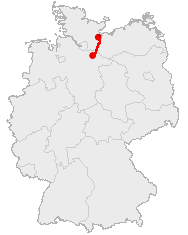
The Salt Road began in Lüneburg where the salt mines were located. The road then crossed the Elbe river and ended in Lübeck a major seaport on the Baltic coast. This was a major port for Scandinavian vessels which brought in the vast shipments of herring. In the Middle Ages, because Salt was also known as White Gold, Lubeck was one of the richest towns in the north of Germany. Because of its salt mines, it became a busy center of trade, wealth and power. As the name states, this route was used mainly for salt, but also used to transport other staples throughout the country.
The salt was used in Scandinavia to preserve the herring catch as that was a major food source throughout those countries. Since there was no refrigeration back then, salting and drying were the main methods of food preservation.
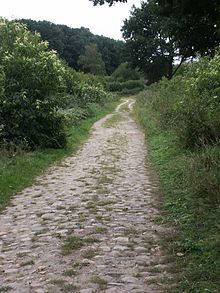
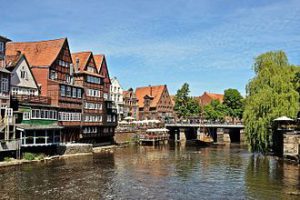

Horse-drawn carts were the mode used to transport the goods along the route which was mainly made up of sandy or muddy roads through forests and small villages. The salt trade became a source of wealth in these villages. Because of salt’s value at that time, the route attracted thieves and bandits so this made the trek that much more dangerous. Only small amounts of salt were able to be transported at one time because it is very heavy, so if the load was stolen, the trader had to go back to purchase more for resale. This is one reason salt was very expensive. These towns also prospered from the salt trade, as tariffs and duties were enforced heavily for the transport of salt. Henry the Lion, Duke of Saxony and Bavaria built a toll bridge over the river Isar to collect taxes on the salt transport.

One interesting note on ecology that we can appreciate in world we live in today, the forests began to become depleted along the salt route where the trees had to be cut down to boil the salt water to make the salt. Heather became the invasive species which then covered the forest space, and now it is a tourist attraction as it is beautiful when in full bloom.

If you travel the route today, you will find yourself in a fairy tale. The countryside is full of idyllic forests and lakes. You will find romantic old cities and towns full of bourgeois homes, redbrick houses, old man-made field stone churches, windmills and watermills. Old graveyards lay rest to the captains who transported the salt along this old historic road. The scenic route is about 66 miles long and is great for getting in touch with nature, if that’s your thing! The direct route in 62 miles. It would take about 20 days from start to finish.
In 1398, the Stecknitz Canal was completed which ran from north to south Germany and made the transport of salt much safer and easier as a much larger volume of salt was able to be moved at one time and the bandits were not so prevalent on the water.
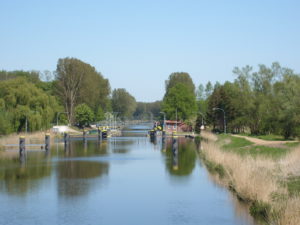
When it comes to the food of Germany, I think of meat and potatoes, sausages and Schnitzel.
Also on the menu are saurkraut, apples and spaetzle, to name a few. For some reason I have raspberries and blackberries on my mind. Probably because my mom and I would spend lots of time picking fresh berries from the bushes along our road at camp in Maine. She’d make the most delicious pies and I know she did it’s Grammy’s way!
There are a few recipes from my childhood that my mom made quite often which included saurkraut. I was never fond of the flavor when I was a kid, but I remember my mom and dad loved it! So, as I grew up, I started experimenting with some saurkraut recipes, a couple handed down from mom, and I found out that they really knew what they were taking about! It’s yummy!
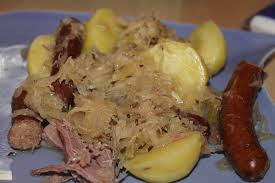
One of my favorite recipes is Saurkraut with Smoked Sausage and Potatoes. I crave this in the fall when the weather starts cooling off and I get in the mood for soups and stews.
A great way to use leftover potatoes is in Hot German Potato Salad.

My mom would cook lots of potatoes to go with our meals and she always had leftovers. This is one thing she’d do with them. I’ll include the recipe as she told me, it’s one of my “No recipe-recipes”, although, in writing it, I did give proportions and instructions! Mom always just threw everything in the pan, and it always came out great!
Another German staple that I love is Spaetzle. I love it with roast chicken or grilled pork chops. It’s easy to make, just takes a little time. It’s definitely a weekend recipe! I have a recipe here that doesn’t involve any special equipment to make them. You can buy spaetzle makers, but there’s no need, you just need a cutting board and a knife.

Spaetzle goes great as a side to Schnitzel. Schnitzel is nothing more than pounded boneless pork chops dredged in flour, egg, bread crumbs and fried in a frying pan until golden and crispy. You can use chicken or turkey cutlets also.

What would German cooking be without an apple dessert? I love Apple Cake, or for breakfast Apple Dutch Baby Pancake, easy, and feeds many. This is a great recipe for a holiday breakfast.
In keeping with my spice theme, I suppose I should mention the spices used in German cooking.
If you think of mustard as spicy, that’s probably about as spicy as you’re going to get with German cuisine. Hot, spicy foods are not the norm in Germany. Most popular herbs and spices used are parsley, thyme, chives, cinnamon, nutmeg, caraway, cardamom, juniper berries, black pepper, basil, sage, dill and oregano.
Traditionally, parsley, thyme, dill, black pepper, caraway, chives and nutmeg have been the spices used most often in savory dishes. At holiday time, and in baked goods, cinnamon, cardamom, anise seed and nutmeg are used to flavor the many pastries and desserts in German homes. Basil, sage and oregano, as well as chili peppers are fairly newcomers to the German cuisine and pretty much started to be used in the 1980’s.
Another newer spice revelation in German cuisine is curry. A popular street food common on the cities of Germany, especially Berlin, is Currywurst.
Currywurst is fried pork sausage cut into bite size pieces and served doused with a curry flavored ketchup.
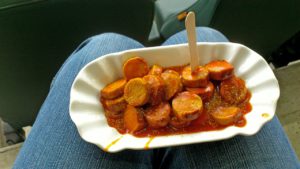
As legend would have it, Currywurst was made popular by a housewife named Herta Heuwer. In 1949, she bartered some alcoholic beverages for ketchup, (probably worcestershire sauce) and curry powder with some British soldiers after the war. She mixed the ingredients together and made Currywurst sauce. For whatever reason, she poured her sauce over grilled pork sausages and started selling it as streetfood! The flavors were probably very exotic compared to the flavors that were common in England at that time. Rather than travel to Berlin to try it, make it at home, here’s a simple recipe for Currywurst.

Mustard and horseradish are commonly used condiments. Mustard, of course for wursts and pretzels, horseradish more for sauces and to flavor meats. Prepared mustard in Germany is not as acidic as in America, thus cutting some of the spiciness. Of course these two condiments are also mixed together for sausage topping. Horseradish was used as medicine as early as the 16th century for its ability to alleviate respiratory and sinus problems. Prepared horseradish is readily available shredded and ready to use in all supermarkets. Horseradish sauce for roast beef is very popular during the holidays.
It seems alot of our traditions stem from old German traditions. Holiday gatherings, Fairy Tales read to us at bed time, history worth it’s weight in gold. Spend some time making a new recipe and see what comes to life!
Come back soon as we head to the Netherlands to see what our old salt has in store for us there!
